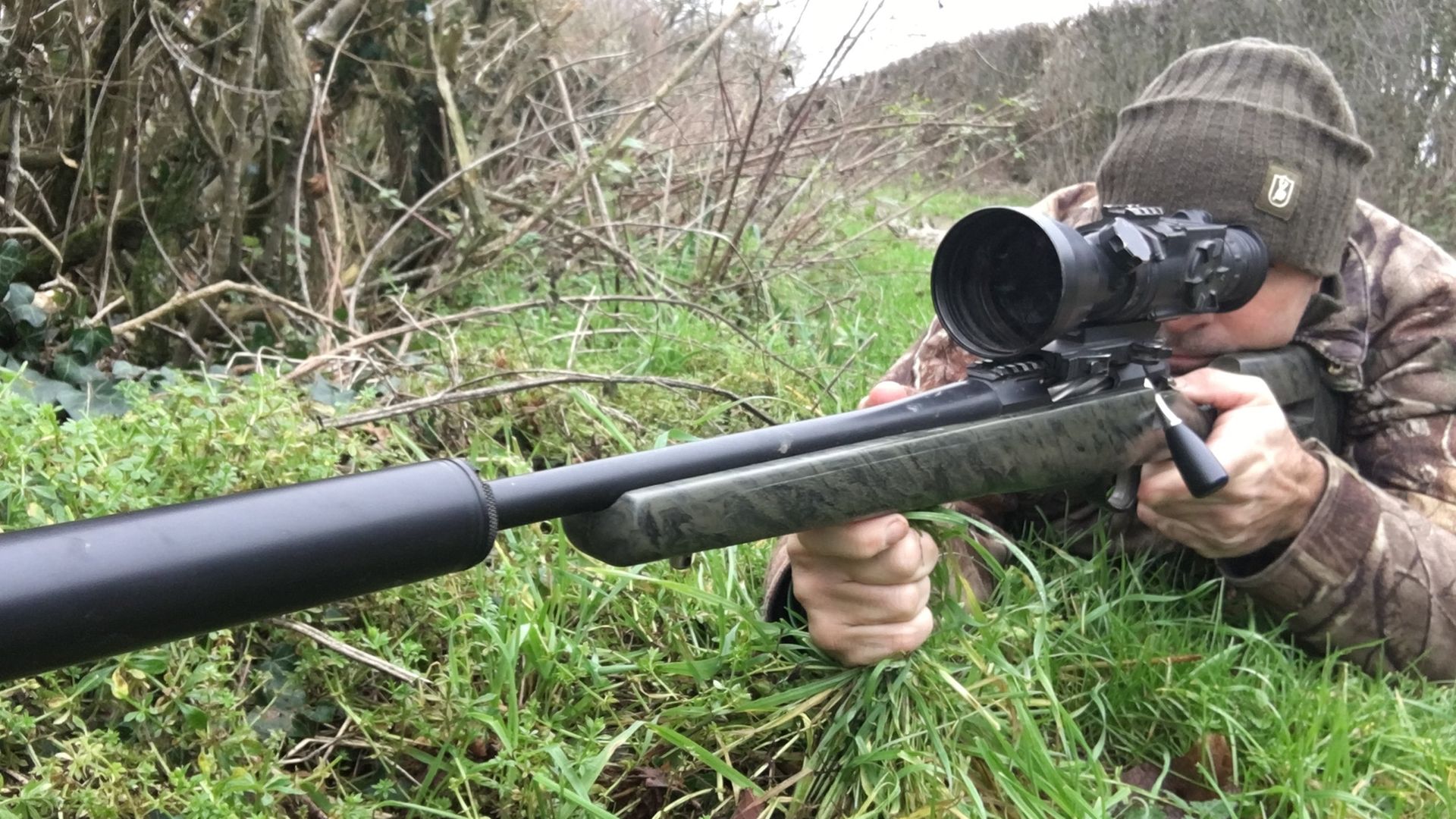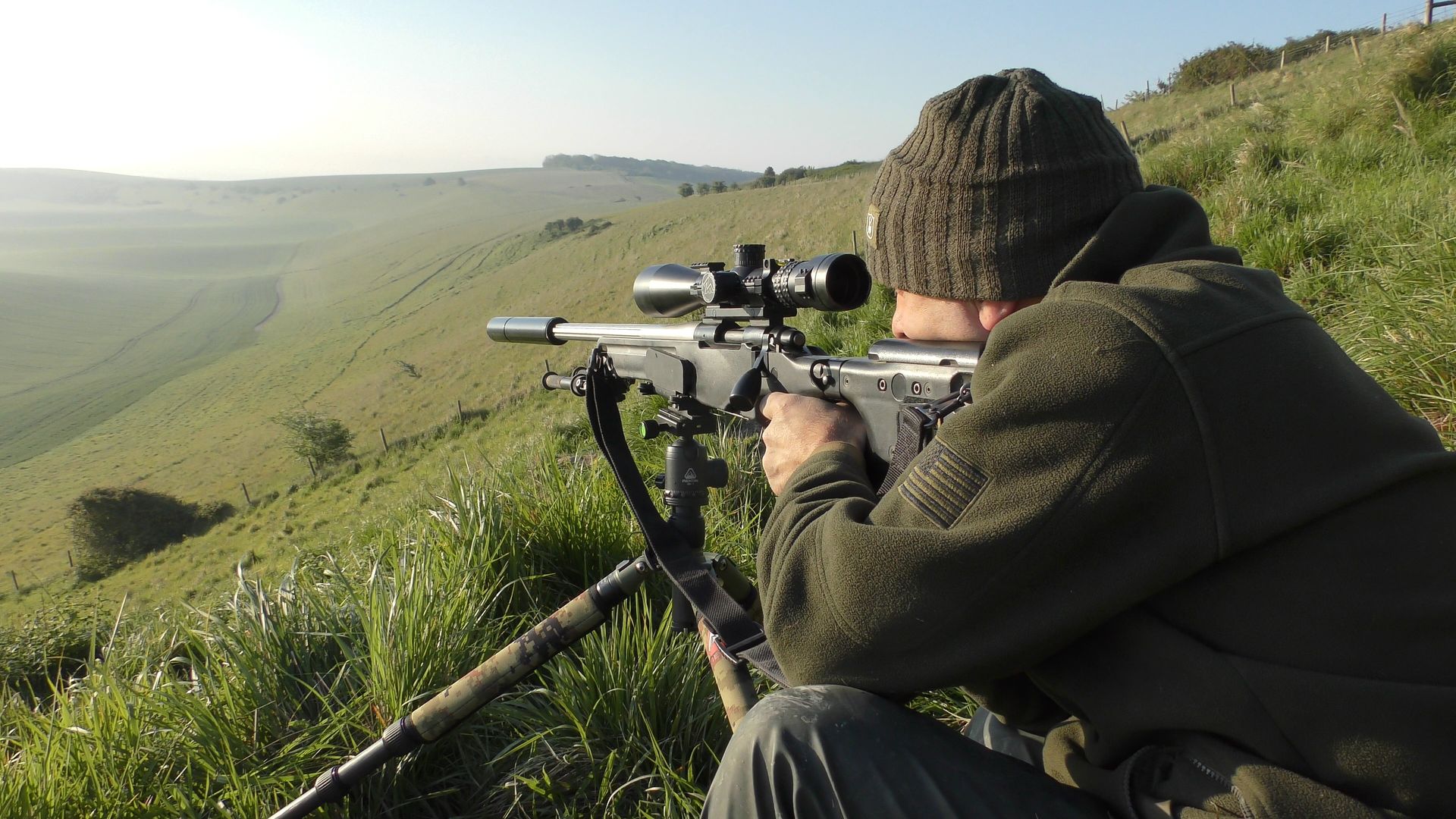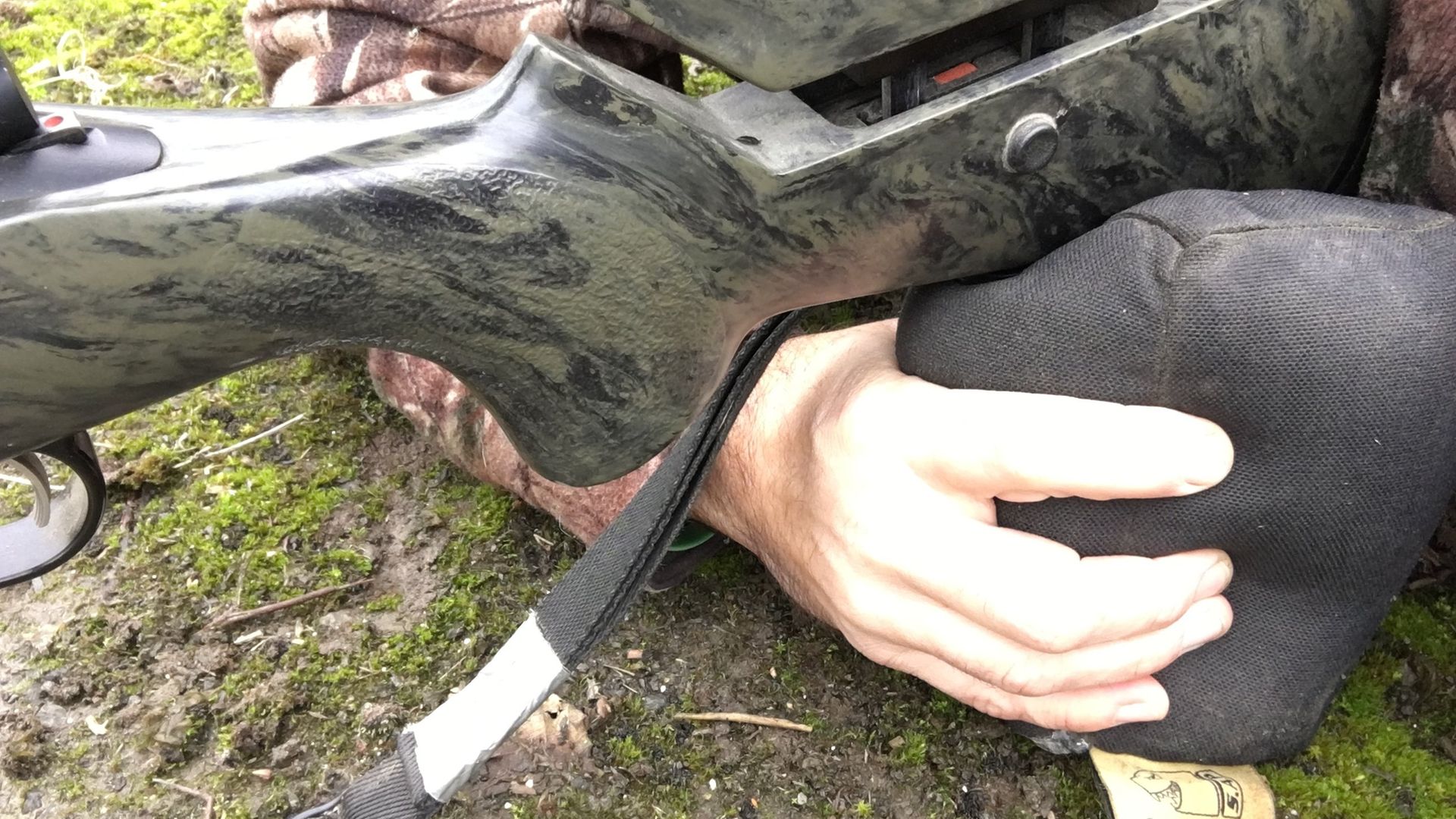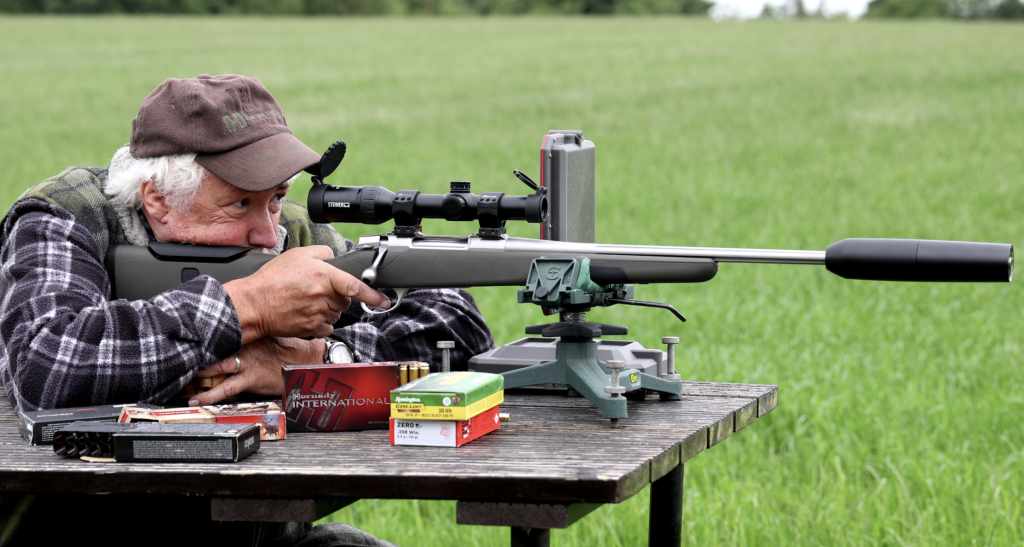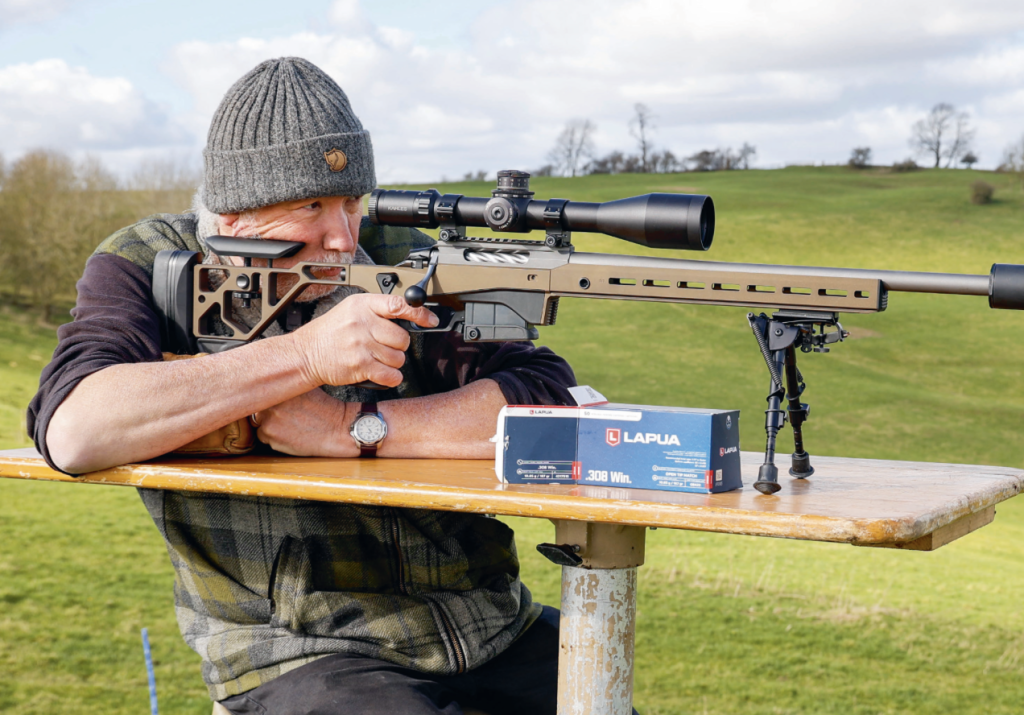Long range with 260RIPS: shooting positions and rests
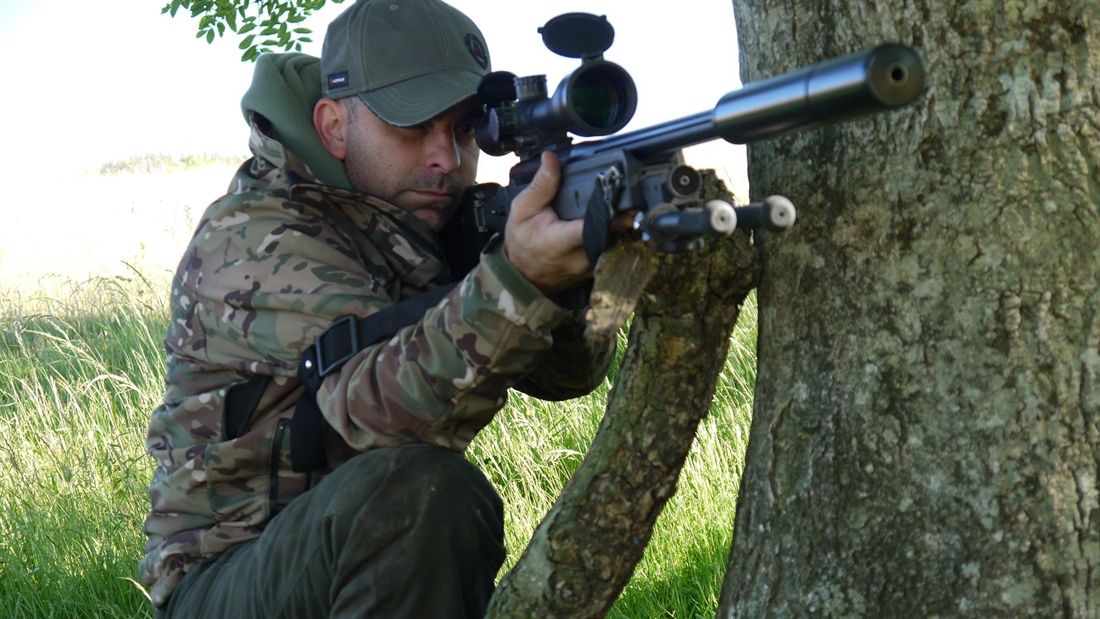
Mark Ripley kicks off this brand-new series on long range shooting by looking at shooting positions and supports…
Whatever range you’re shooting at, how steady you are will have an effect on how accurate your shot will be. For a person or object to be steady will depend on how close to the ground they are and the number of points of contact with the ground, as well as how far apart they are.
In simple terms, the closer to the ground you are, the more stable you are likely to be, which is why the most accurate way to shoot is usually from a prone position and the most unstable would be a standing unsupported shot.
Shooting prone
The problem with shooting from a prone position is that it can often make seeing your target impossible due to long grass or vegetation, meaning that a higher shooting position is often needed. Also, the idea of lying in a wet muddy field can be rather unappealing and, for the much older gentlemen (such as foxing guru and my good friend Mike Powell), very difficult (I actually added that in to see if he really does read my articles, as he says he does!).
Shooting from improvised positions
Very often, out in the field, we have to adjust to our surroundings and situations and it may not be possible to get into a prone position for one reason or another or perhaps we may not even be able to take those few steps to lean against a tree without our quarry spotting the movement.
Very often, we tend to spot a fox or deer when we are about to enter another field, and climbing or undoing a gate may simply make too much noise or movement, which means shots leaning on a gate post, rail or fence post are common shooting positions.
If you are able to, placing a hat, glove or similar item under the rifle will not only help better steady it and cushion recoil, but it will also help protect the finish on your stock (never rest the barrel itself on anything, as this can and will dramatically affect the point of impact due to altered barrel harmonics). Obviously, you can also just use your hand between the rifle and the resting surface to the same effect.
Needless to say, a gate that’s swinging or a wobbly fence post is not ideal, so try to pick something a little more stable if possible. If your rifle has a sling, then pass your left arm (right-handed shooter) through the loop from the left side of the rifle and wrap the sling tightly around your forearm and over your elbow to pull the rifle into your shoulder. This is a good technique to use to reduce wobble whenever you don’t have a solid rest.
Supported shots
Many foxers and stalkers – myself included – carry a set of shooting sticks or a tripod when shooting in the field, which is a very useful item. Probably the most stable of these is the Viperflex quad sticks with the additional 5th leg. These are excellent sticks and lightweight. Once set up, they offer a very stable platform
and I’ve shot foxes comfortably over 250 yards.
The downside to this type of rest becomes apparent when you need to pan around. To do this, you need to lift one half of the set up and off the ground and pivot it round, which can be a real trauma amongst brambles etc, as can be placing the extra leg out in front to get the right height. Although slightly less convenient to carry, I’ve found the Rekon tripod to be the best all-round shooting aid, as has anyone else I know that has bought one. They take seconds to set out in front of you, quickly adjust for uneven ground and you can pan round 360 degrees from it, making it extremely versatile and ideal for foxing work.
Although these are not quite as stable, it is possible (with a bit of practice) to make some long shots with them, especially if you position yourself properly. In all honesty, I still invariably shoot from them as I would a pair of shooting sticks, but if I want to take a very long shot I alter my stance to create more of a solid triangle, with my legs and the rear leg arranged as pictured. By using a thumb-down grip on the rear leg, I’m able to lock my arm out straight with some weight on it and use my bone structure rather than muscle to steady myself.
Another trick is to attach a length of cord to the front of the stock and pass it back under the sticks to your lead foot. With your heel on the cord, use the front of your foot on the cord like an accelerator pedal to add tension to it whilst leaning down on the stock of the rifle to keep it under strain, which will in turn help lock everything down.
Kneeling and sitting shots
Kneeling or sitting positions are more stable than standing freehand shots and also give a slightly higher shooting position than prone, so are well worth practising until you feel comfortable with them. I used to shoot a lot from the kneeling position when walking up on rabbits at night with the lamp but invariably now I feel more comfortable taking shots standing using a tripod.
As with all types of shots, if you can rest the rifle on or against something solid, then you are far more likely to hit your target and if shooting prone then a bipod or even resting the rifle on a rucksack or rolled up jacket will be a great asset in terms of accuracy.
Using a rear bag while shooting
If you’re shooting long range (over 300 yards), then the use of a small rear bag under the butt of the rifle works wonders. Using your non-trigger hand, grasp the bag and squeeze or release it to raise or lower your crosshairs on the target. Once you are on target simply maintain that pressure and take the shot. The rear bag also helps direct recoil directly back in a straight line into your shoulder.
If you don’t have a rear bag, then something like an old sock filled with grains will work just as well, or if out in the field, then make a fist under the stock or roll up a hat or something to use in the same way.
Shooting in the field means you often have to adapt and there’s been many times where I’ve had to make use of all sorts of things as rests from gate posts to straw bales and from garden statues to a mate’s shoulder just to get a shot!
I remember once getting called to remove some foxes from around a zoo and using the hand of a large
Hello Kitty figure as a rest to shoot one fox! Who would ever think such a loving cat would lend a hand in some essential pest control! I can also recall shooting a fox at quite a good distance from a kneeling position lent against the side of a tree. To add a little more support, I picked up a fallen tree branch and jammed it in the ground against the side of the tree, giving me the perfect ‘notch’ to rest the rifle and make the shot.
Even a handful of bunched up grass pulled together and upwards and held under the forend of a rifle can add some support if you’re shooting prone. With a little thought or common sense, many things can be used to assist in steadying a shot and as long as the basic principles are applied, such as not letting the barrel contact any surface and attempting to avoid too much direct contact with the rifle against a solid object, then it can make a big difference to your shot.
Lastly, we come to shooting from vehicles (you lazy buggers!). Yes, I do also shoot from a vehicle occasionally, but generally I prefer to be a little stealthier and approach on foot! I dare say many a fox has been dropped from off the bonnet of a pickup or off the roof of the cab and both offer good solid rests. A good bit of advice to not only protect your truck but also help keep a bipod steady is to get a bit of rubber matting or old door mat with a rubber back to lay on the bodywork first.
Going back to my mate Mr Powell, he does the vast majority of his foxy business on the back seat of his pickup (I’ll just leave that one there for you to think about) and uses the rear side windows to shoot from, resting the forend of the rifle on the window glass itself with a bit of foam pipe lagging over it and adjusts it for height at the touch of a button … whilst sat in the warm cab, radio softly playing, flask by his side. With age comes wisdom, it would seem?
Related Articles
Get the latest news delivered direct to your door
Subscribe to Rifle Shooter
Elevate your shooting experience with a subscription to Rifle Shooter magazine, the UK’s premier publication for dedicated rifle enthusiasts.
Whether you’re a seasoned shot or new to the sport, Rifle Shooter delivers expert insights, in-depth gear reviews and invaluable techniques to enhance your skills. Each bi-monthly issue brings you the latest in deer stalking, foxing, long-range shooting, and international hunting adventures, all crafted by leading experts from Britain and around the world.
By subscribing, you’ll not only save on the retail price but also gain exclusive access to £2 million Public Liability Insurance, covering recreational and professional use of shotguns, rifles, and airguns.
Don’t miss out on the opportunity to join a community of passionate shooters and stay at the forefront of rifle technology and technique.



